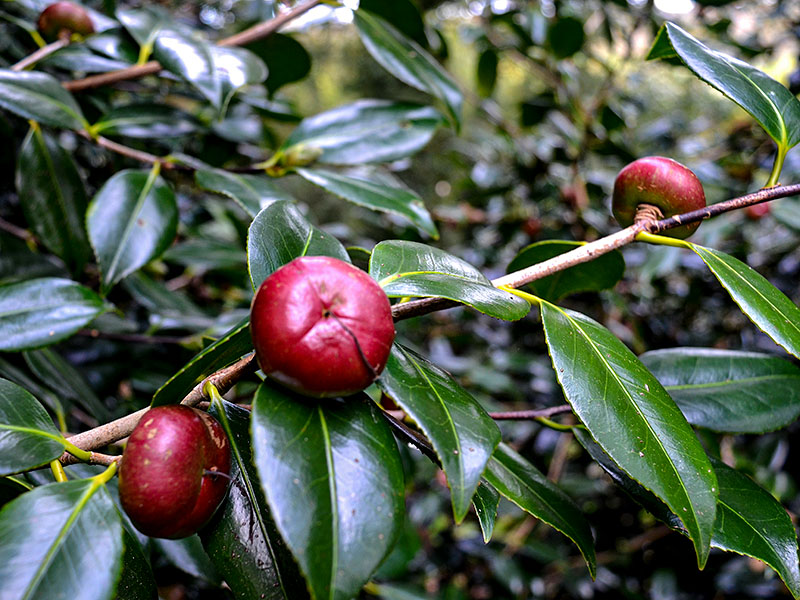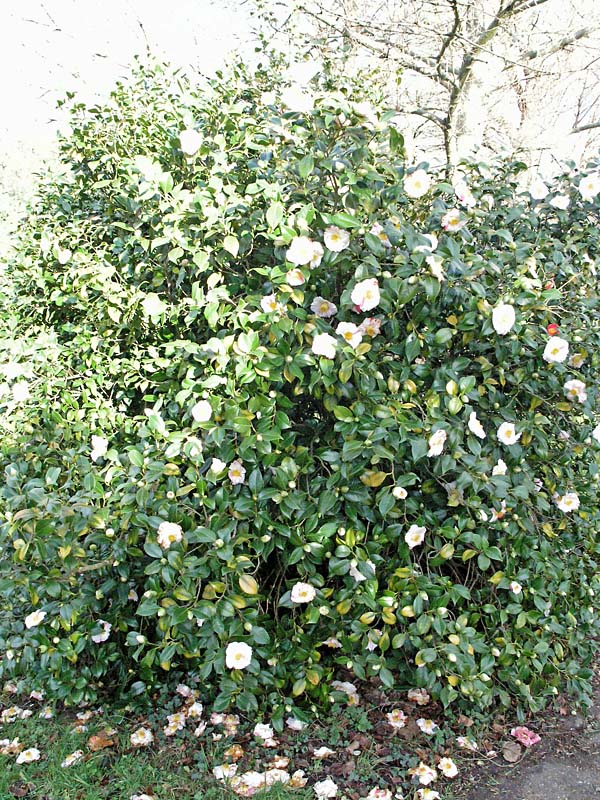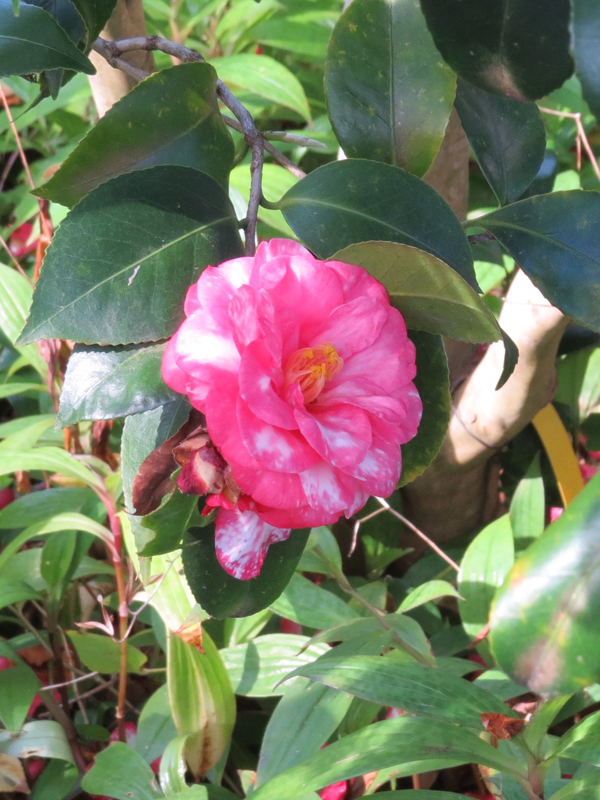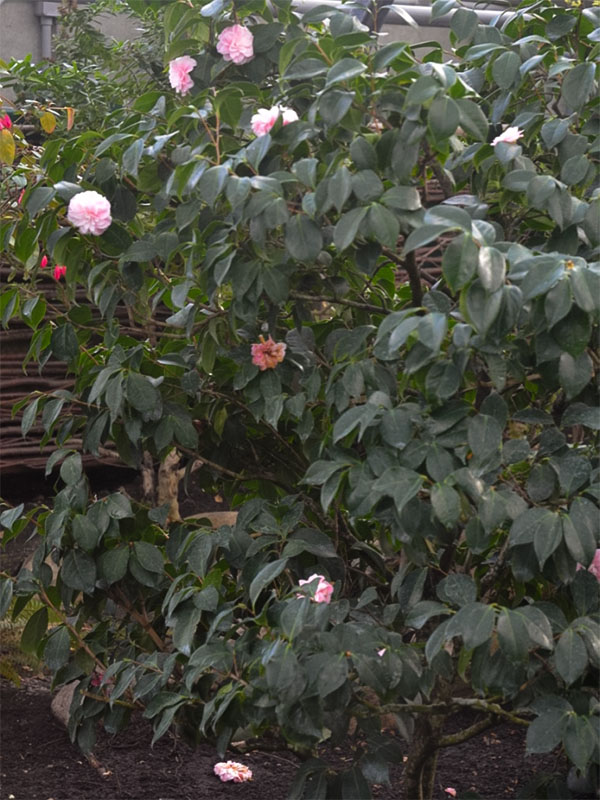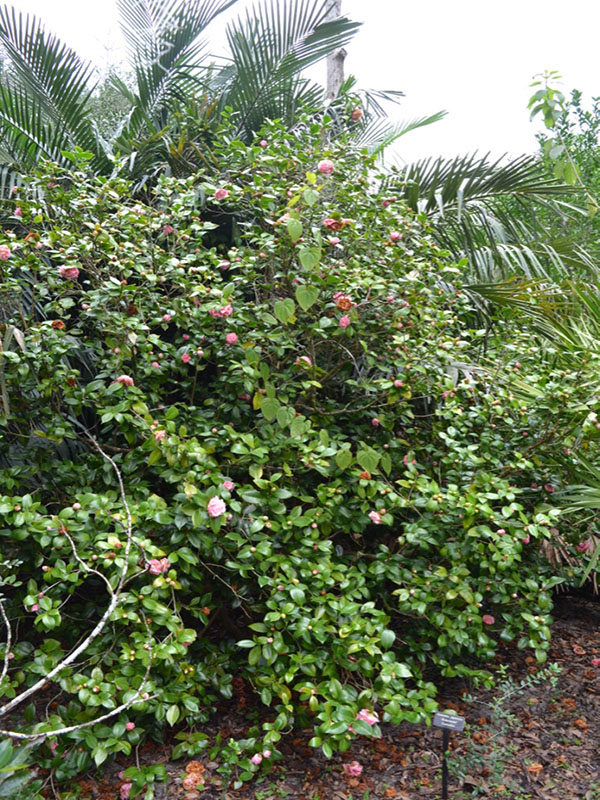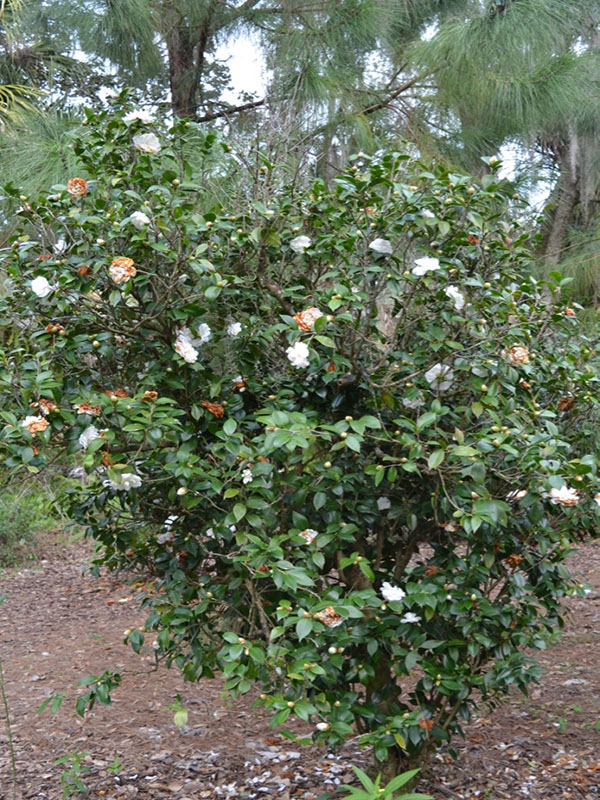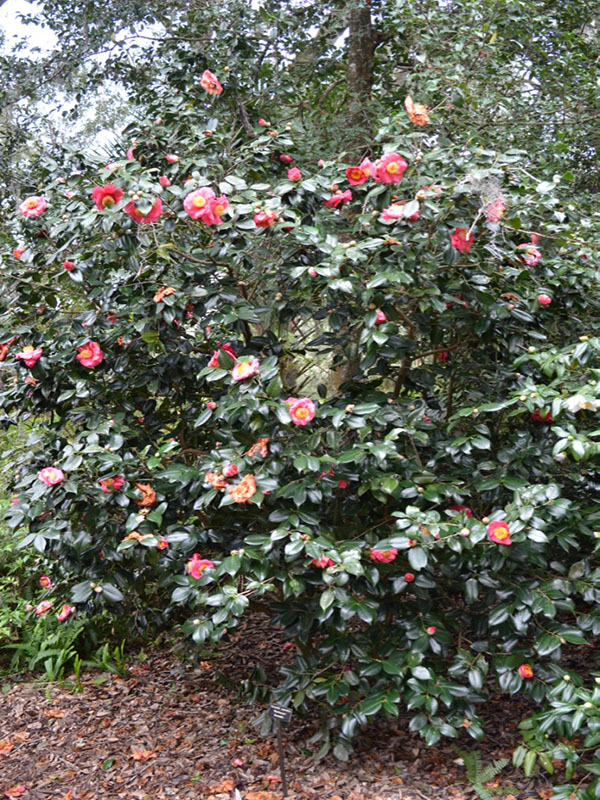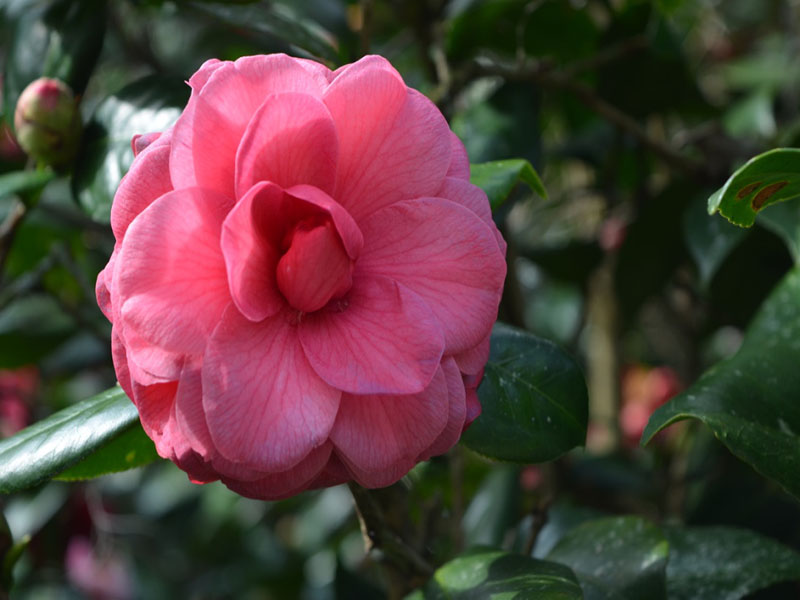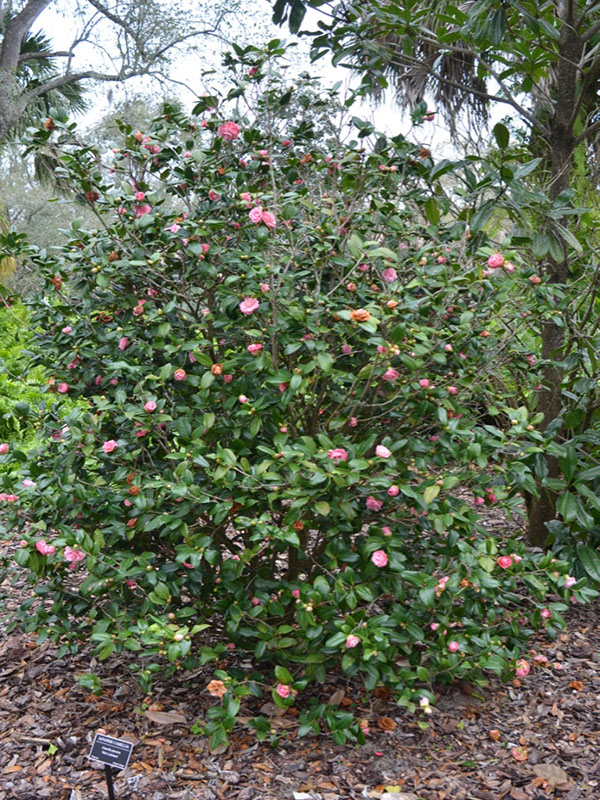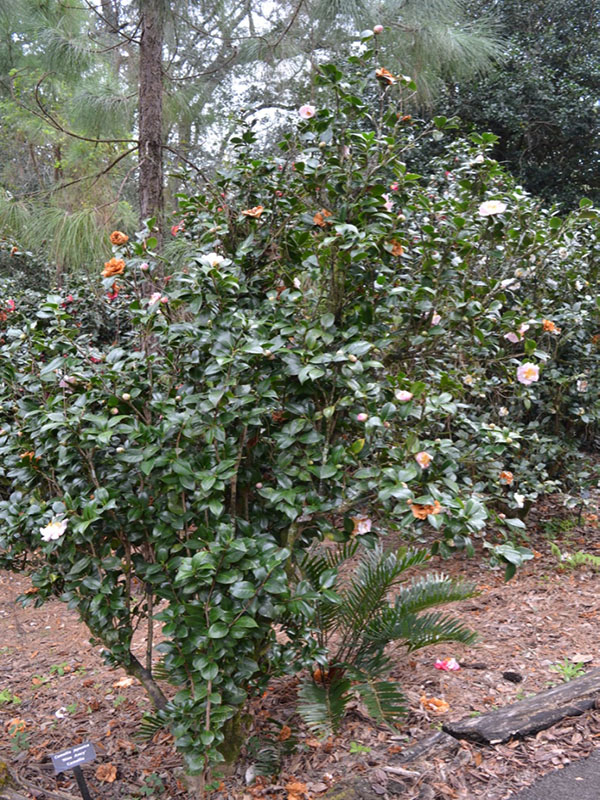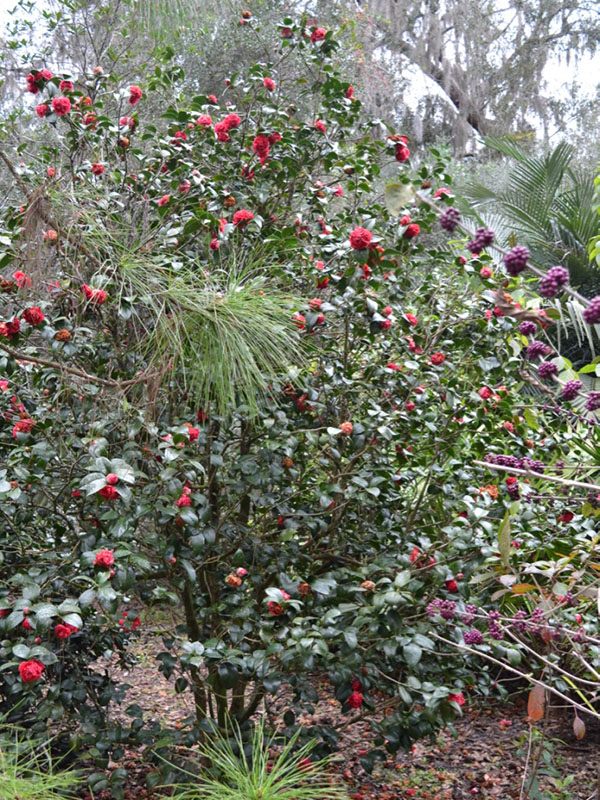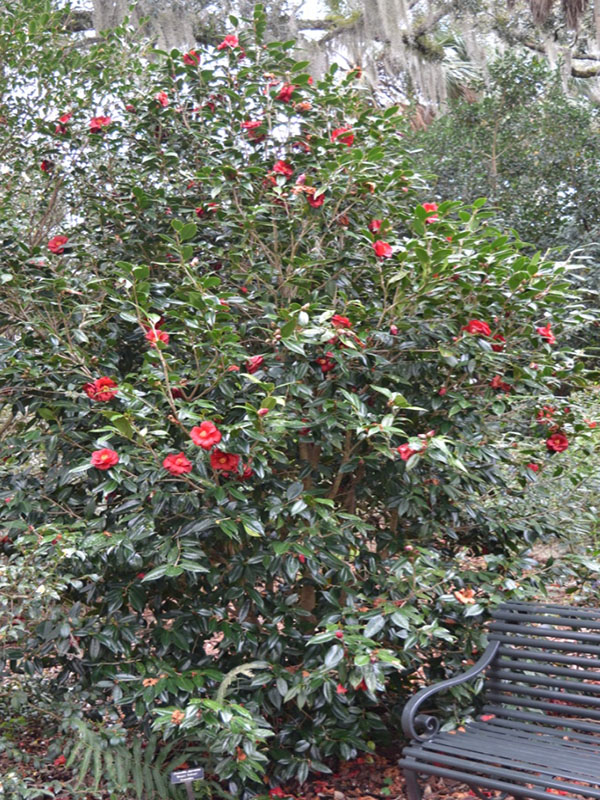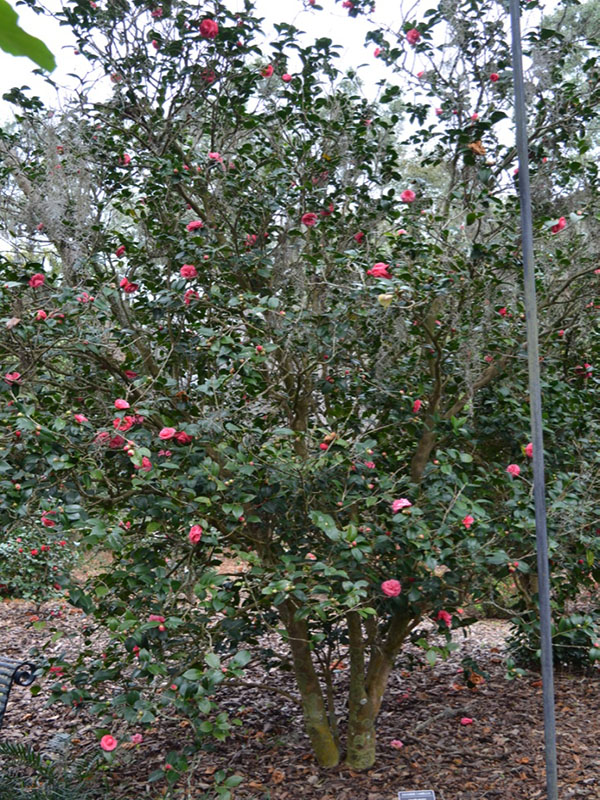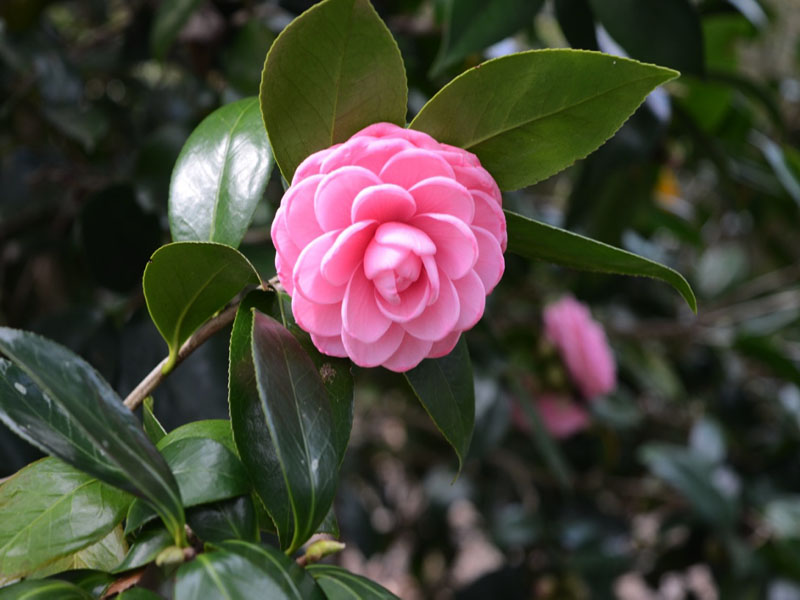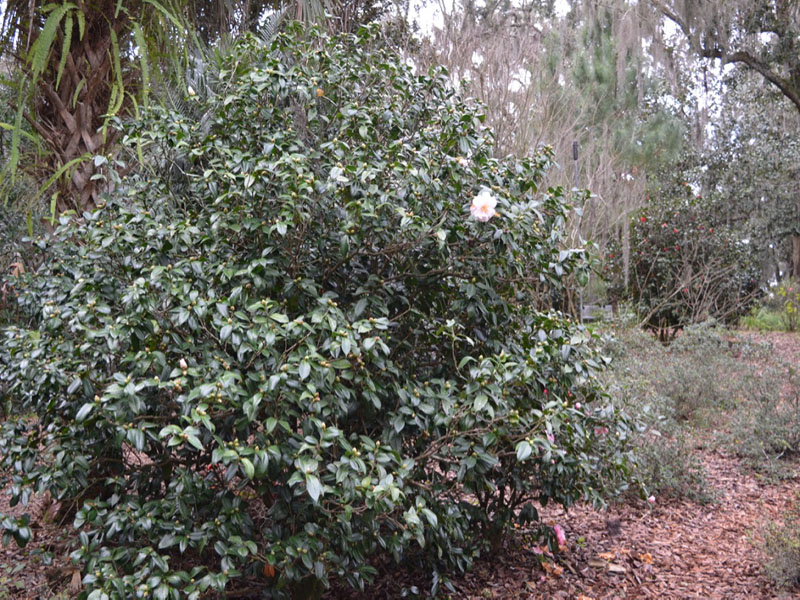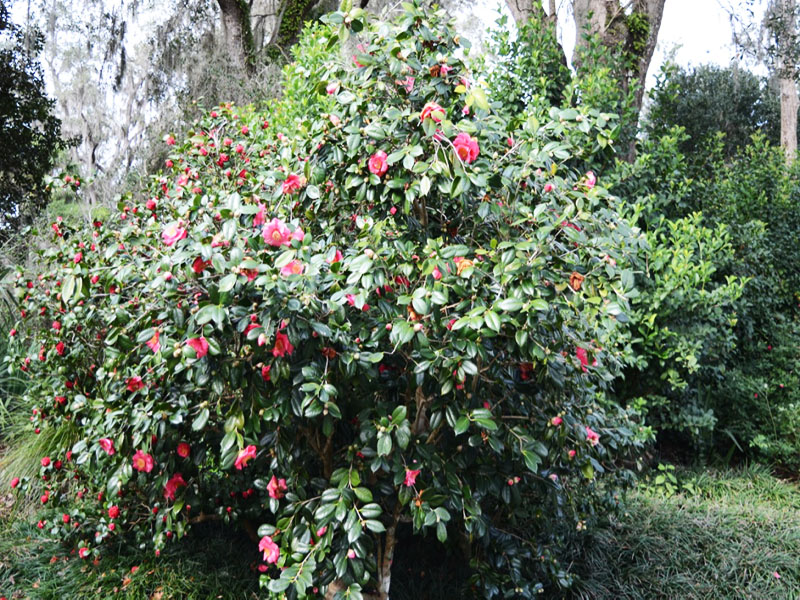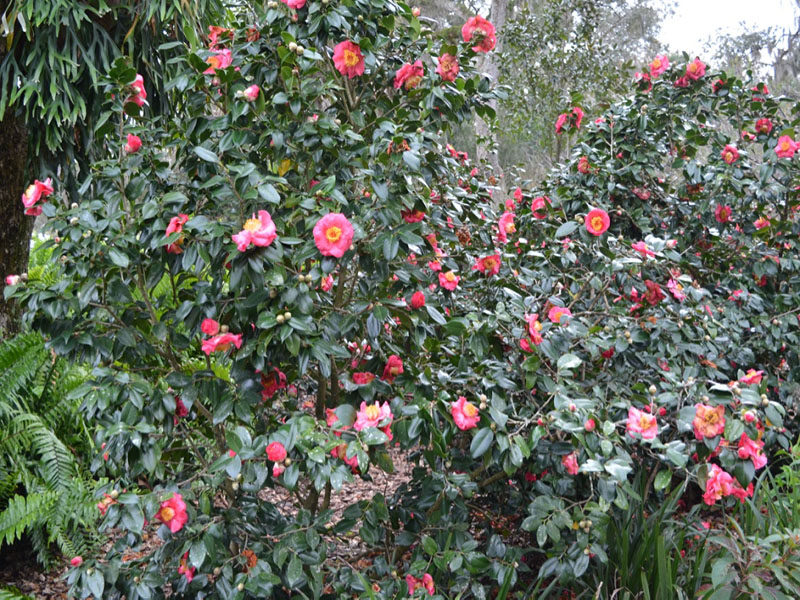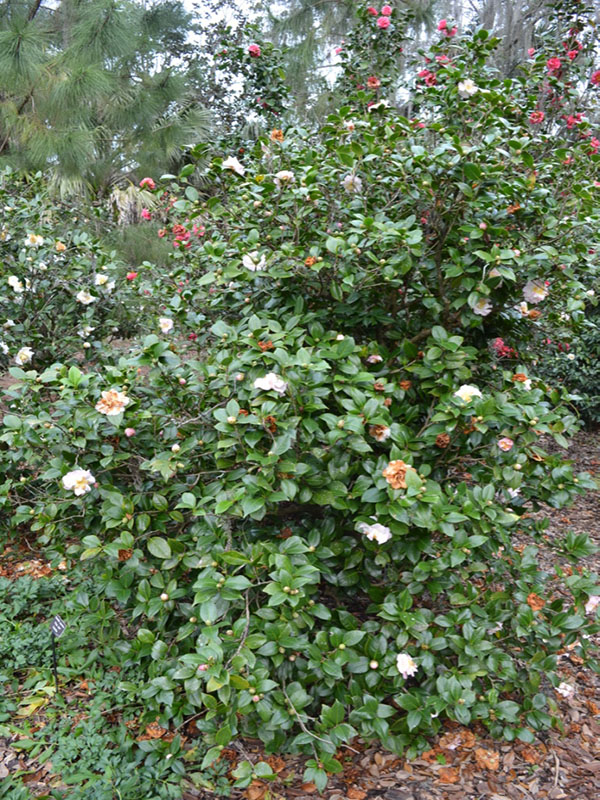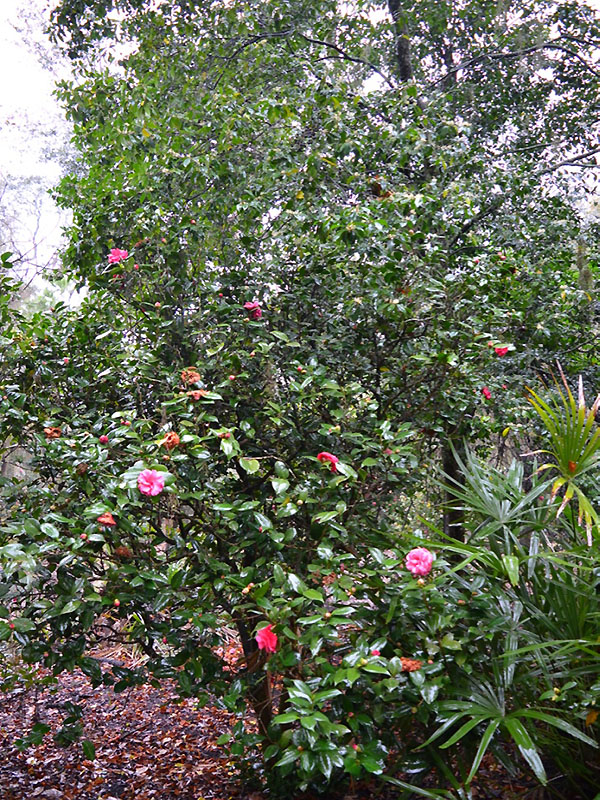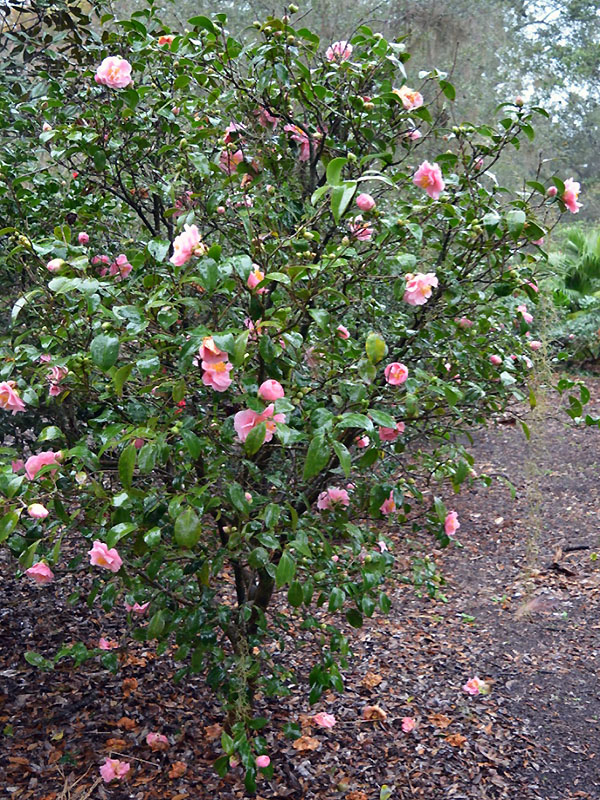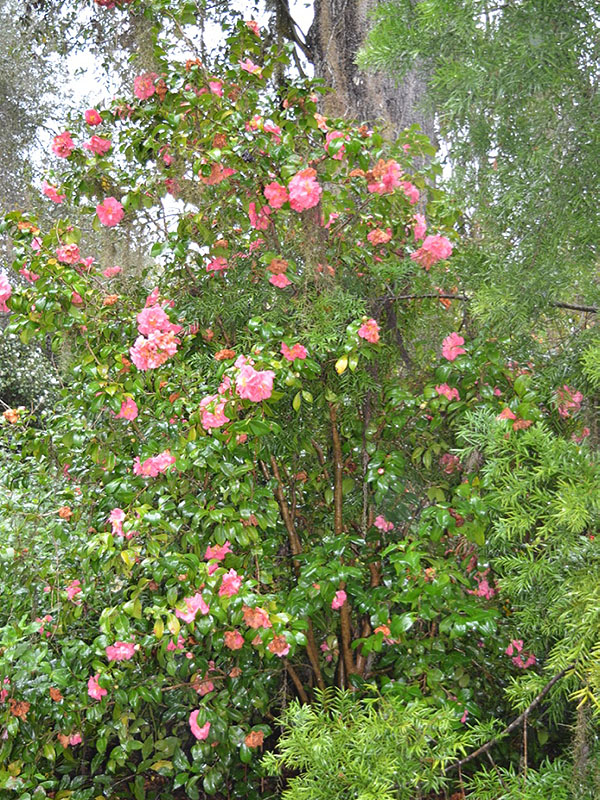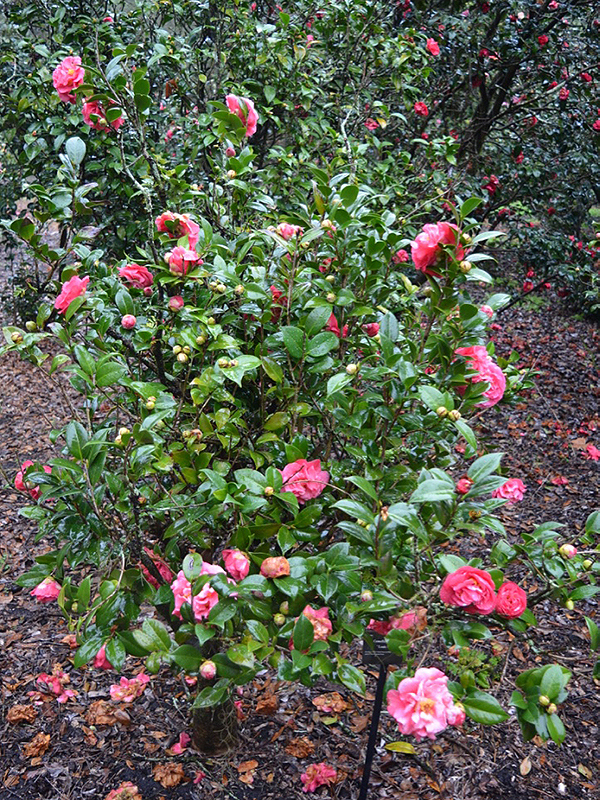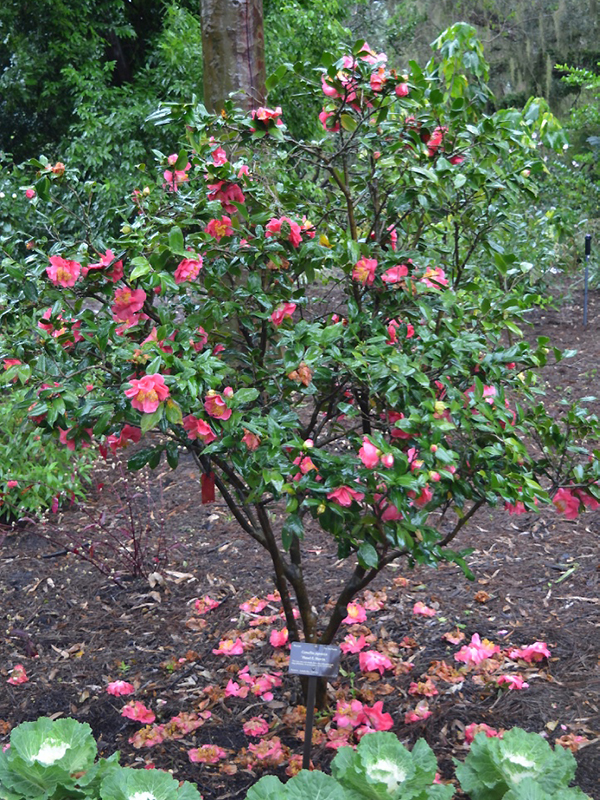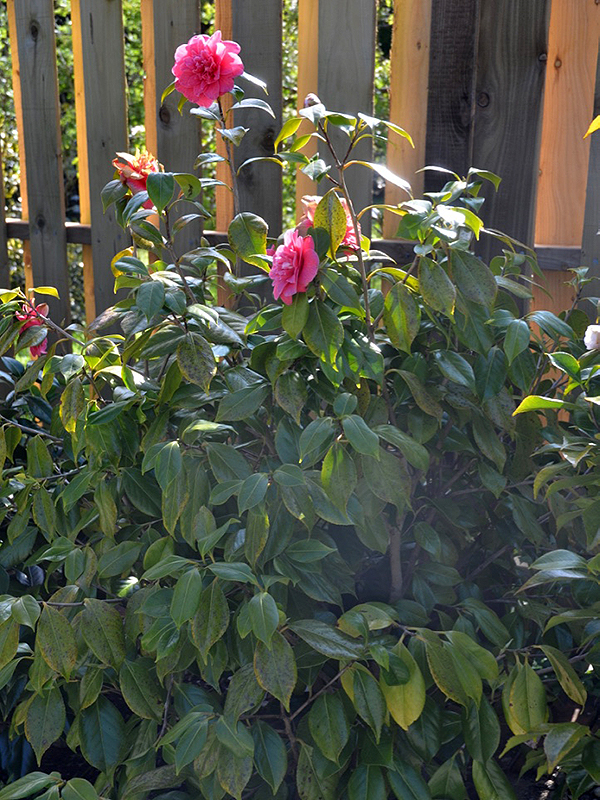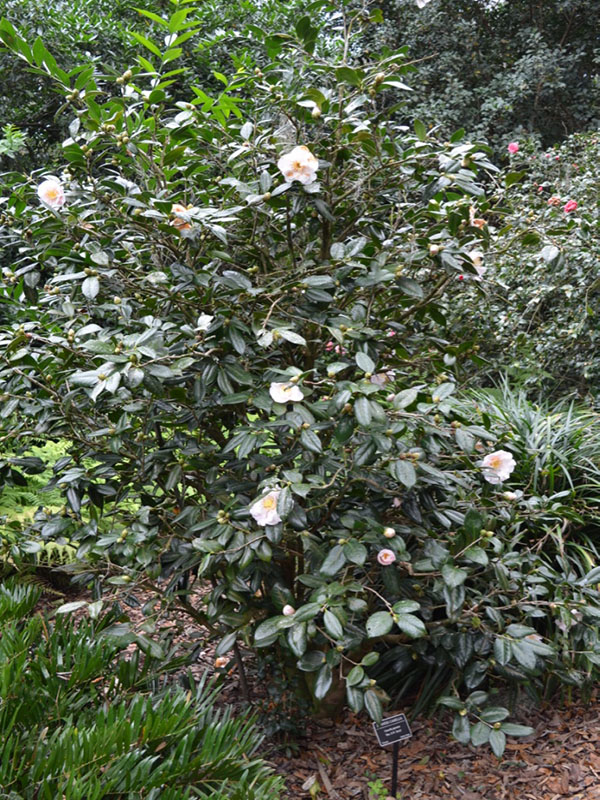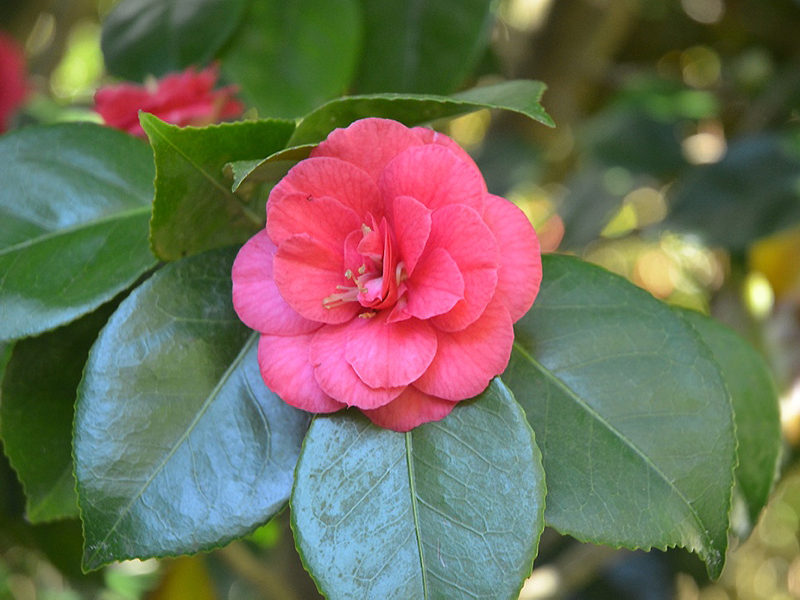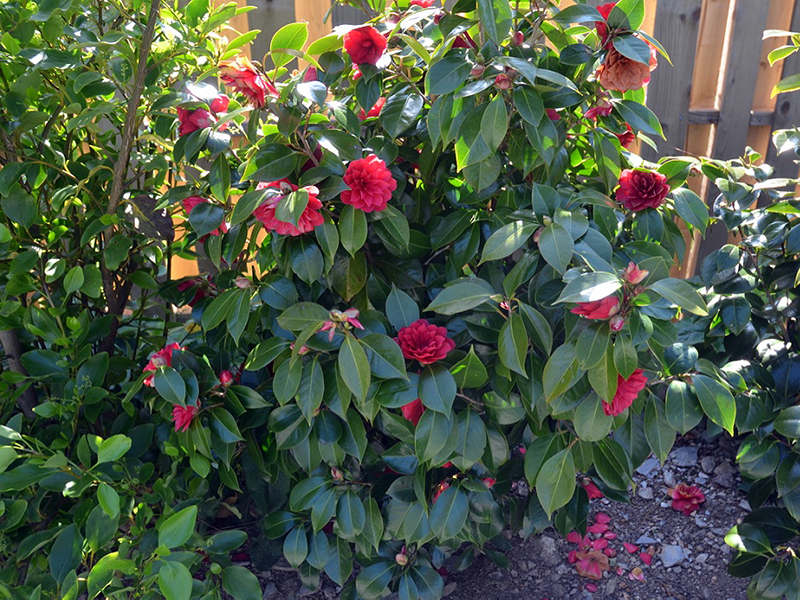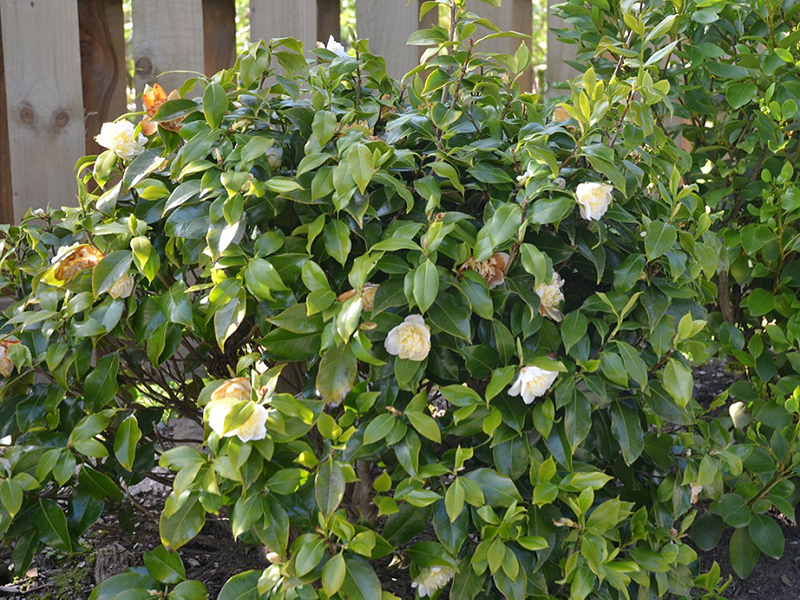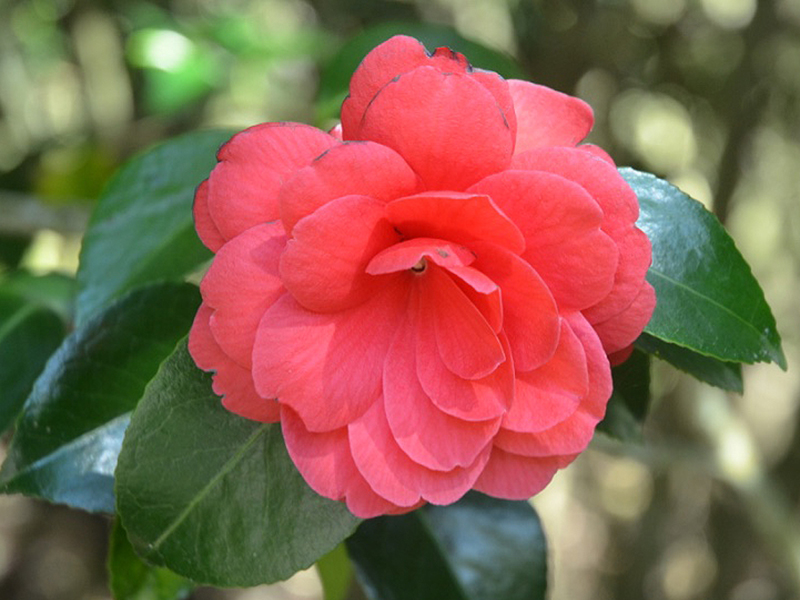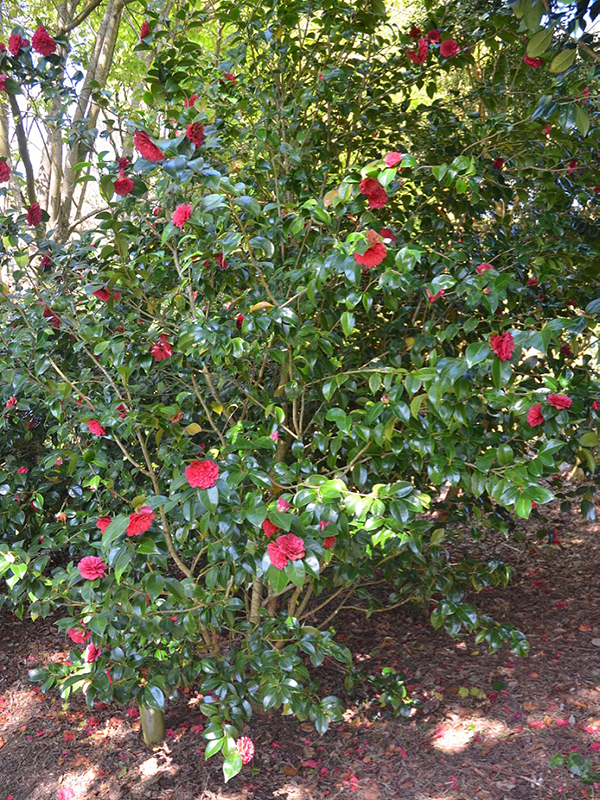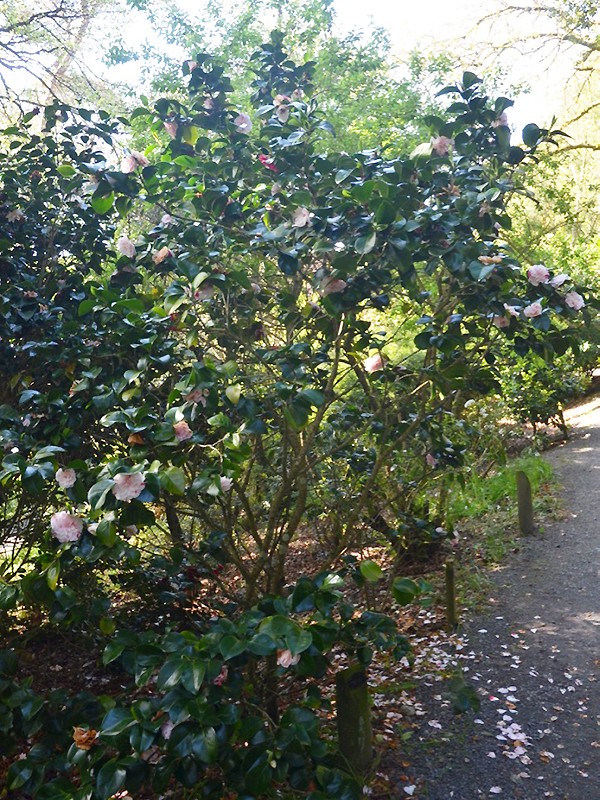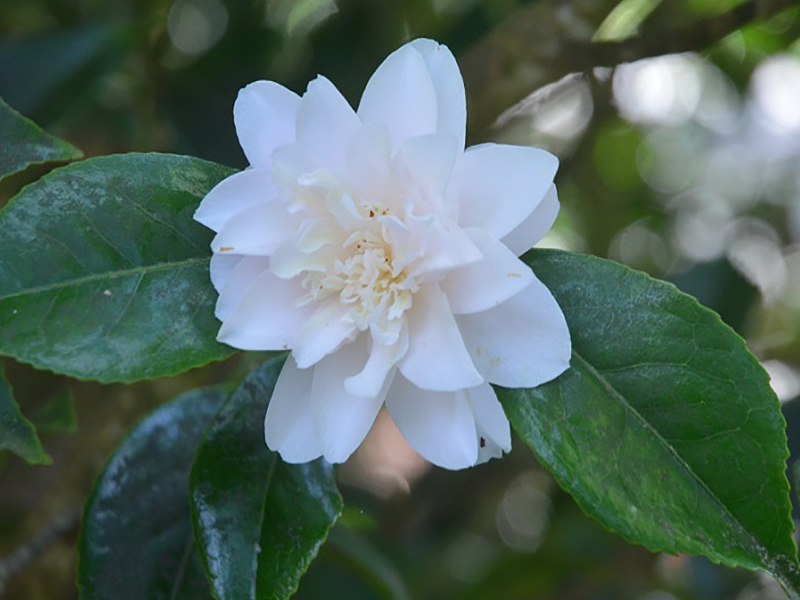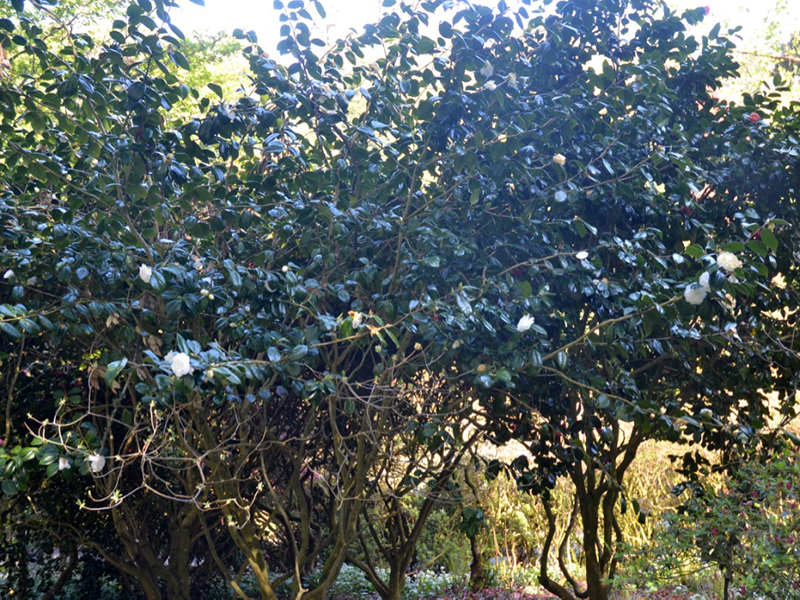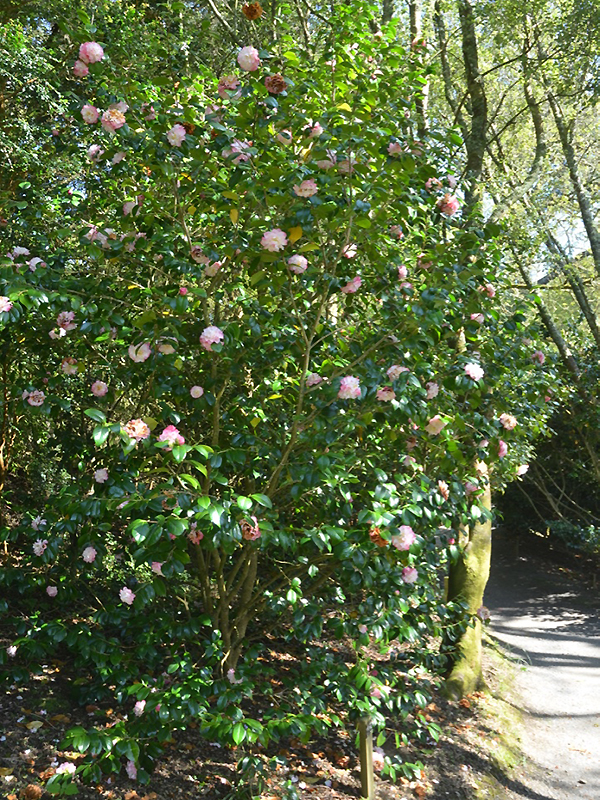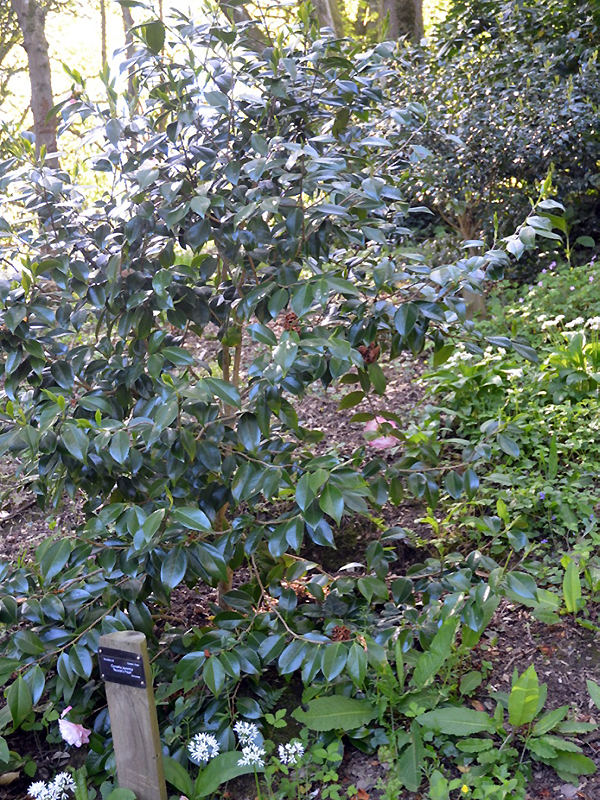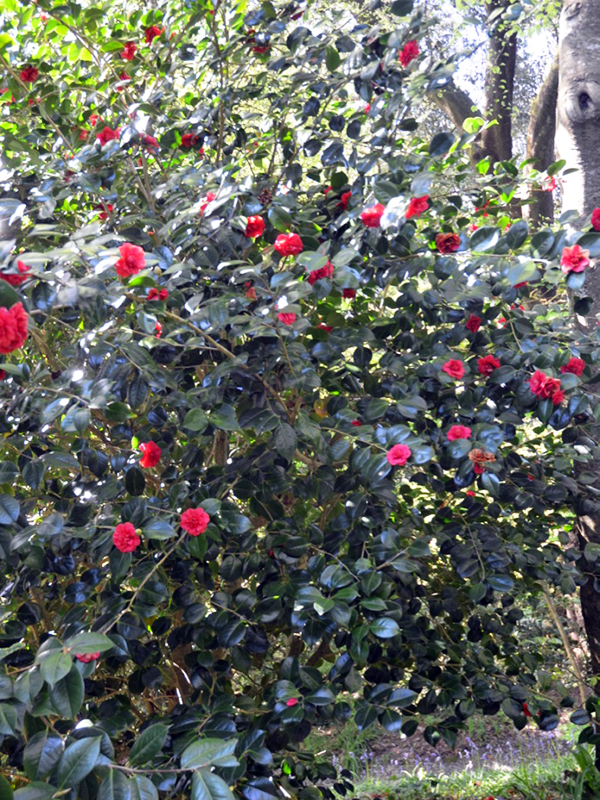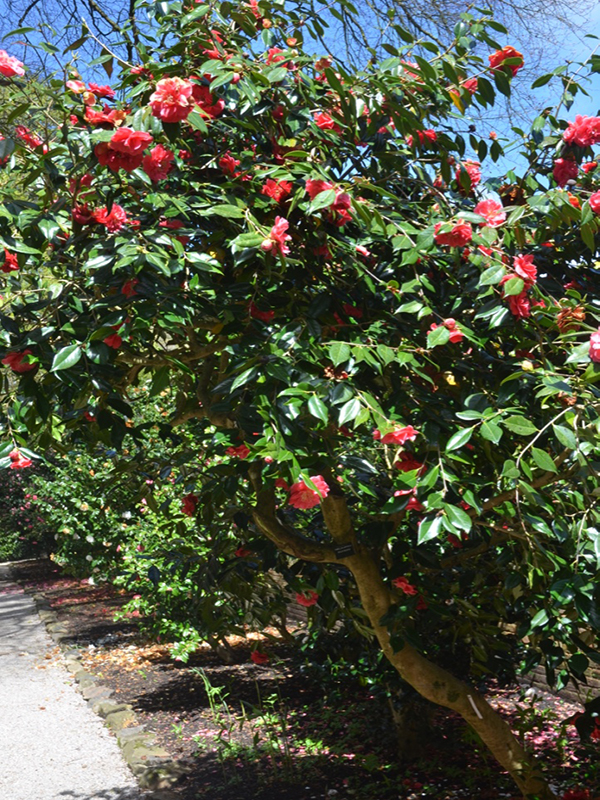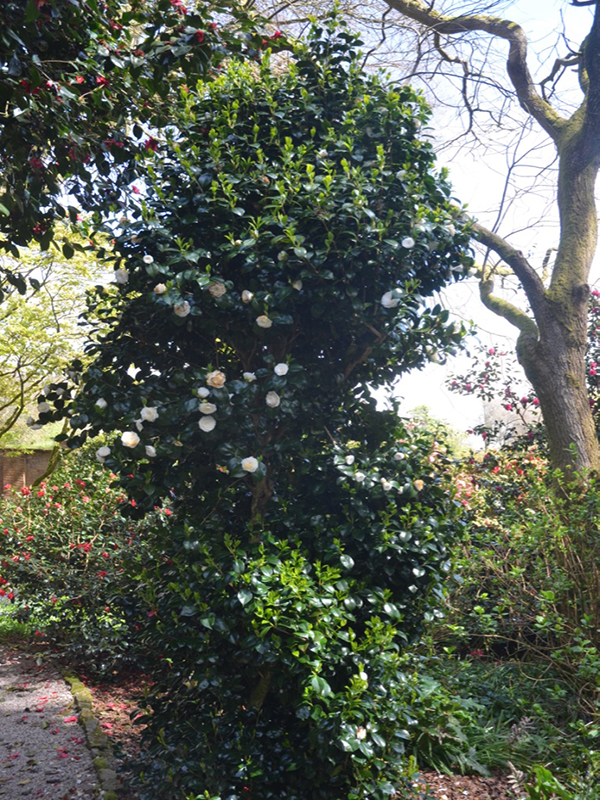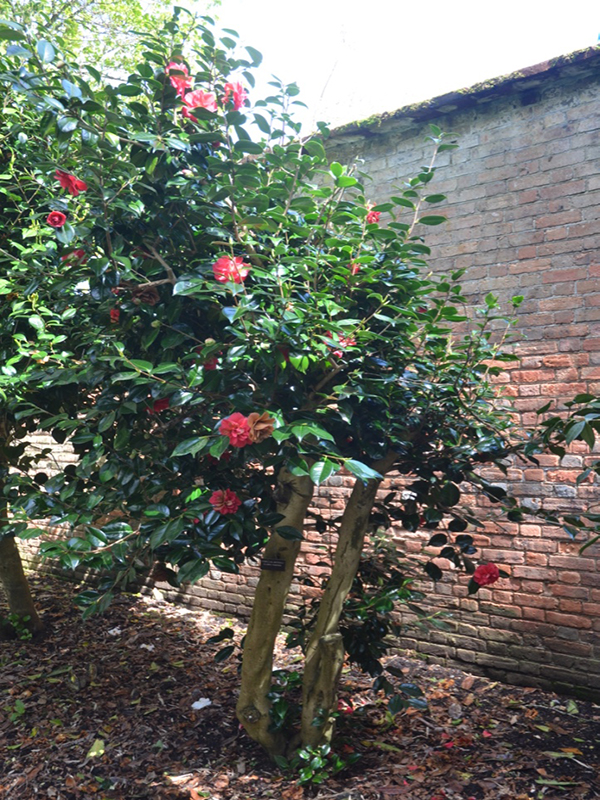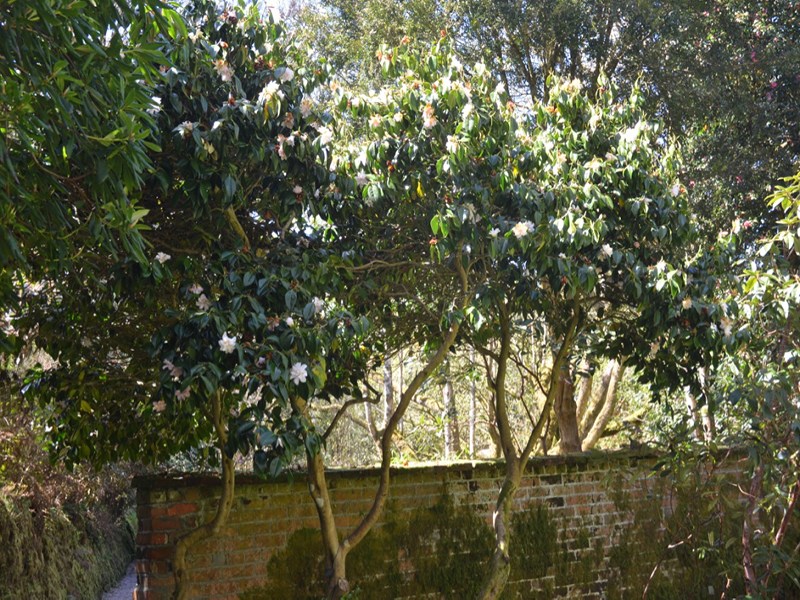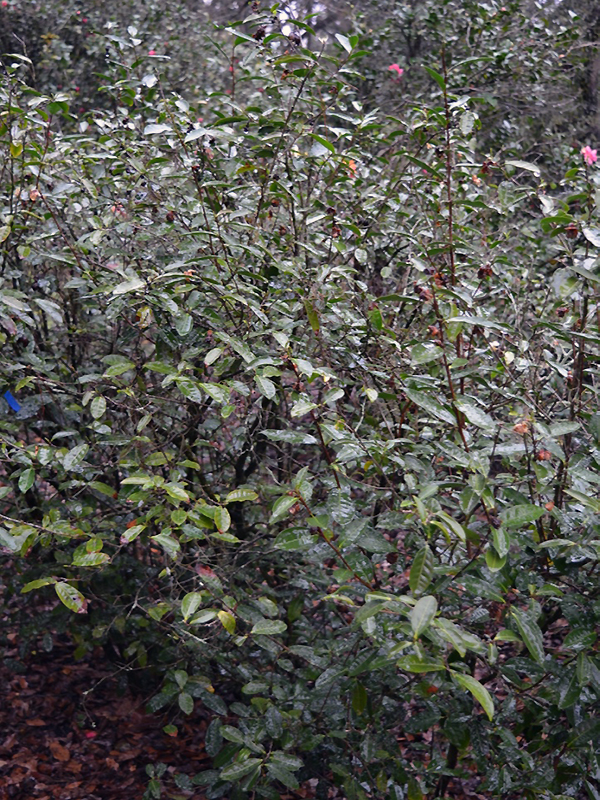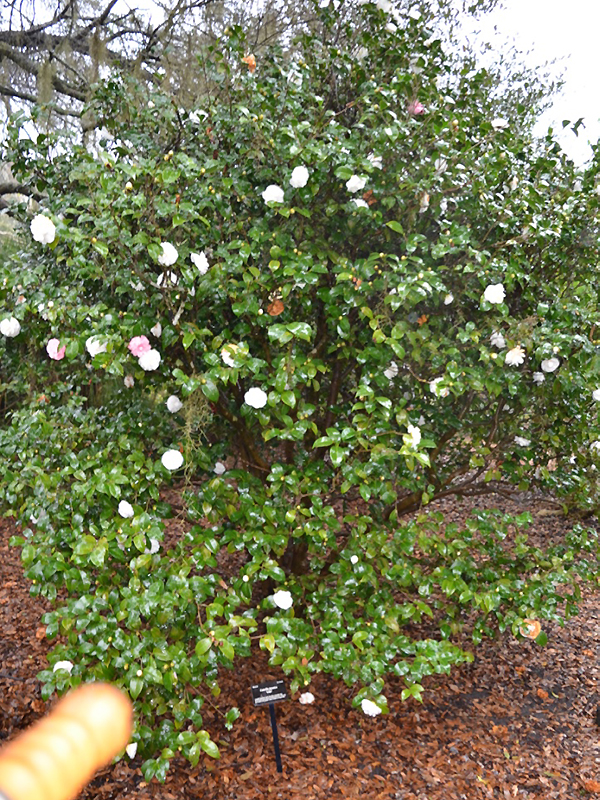
Woody > Camellia > Camellia japonica > Camellia japonica
Camellia japonica
Japanese Camellia, Camellia
Origin: Found growing over a wide area of the Japanese archipelago, and on islands and coastal edges of South Korea and China. Imported into cultivation in England around 1730 with the first recorded seed-raised plant grown by the 8th Baron Petre in the glasshouse at Thorndon Hall, Essex, England. The first cultivars arrived in England via an East India Company ship the Carnatic in 1792 and although originally given Oriental cultivar names they were renamed 'Plena', 'Incarnata', 'Alba' 'Variegata' and 'Rubra Plena'.
| Family |
| Theaceae |
| Genus |
| Camellia |
| Species |
| japonica |
| Category |
| Woody |
| Type |
| Shrub (evergreen) |
| USDA Hardiness Zone |
| 7-9 |
| Canadian Hardiness Zone |
| 6b - 8a |
| RHS Hardiness Zone |
| H5 |
| Temperature (°C) |
| -15 to -10 |
| Temperature (°F) |
| 5 to 14 |
| Height |
| 1 m - 1.5 m |
| Spread |
| 1 m - 1.5 m |
Photographs
Description and Growing Information
Flowering Period
| Cultivation |
| C. japonica prefers slightly acidic soil in a partially shaded location in a protected location away from excessive winds. Prune annually back to strong side-shoots to control height and produce, dense, uniform plants. Vigorous pruning of old Camellias using a chainsaw can produce satisfactory results. |
| Growth |
| Medium |
| Pests |
| Aphid infestations and the resulting sooty mould may be of concern and are easily controlled with a mild detergent and a vigorous garden hose. Camellia flower blight (Ciborinia camelliae) may be of concern in southern England and parts of Europe where the weather is warm. The disease causes spotting and rotting blooms with the only effective control being their removal, additionally keep the ground below infected plants free of debris to break the disease cycle. |
| Notable Specimens |
| Lanhydrock Gardens, Cornwall, England. |
| Propagation |
| Semi-hardwood cuttings taken in late summer to autumn, using a mild hormone, bottom heat and mist produce the best results. |
